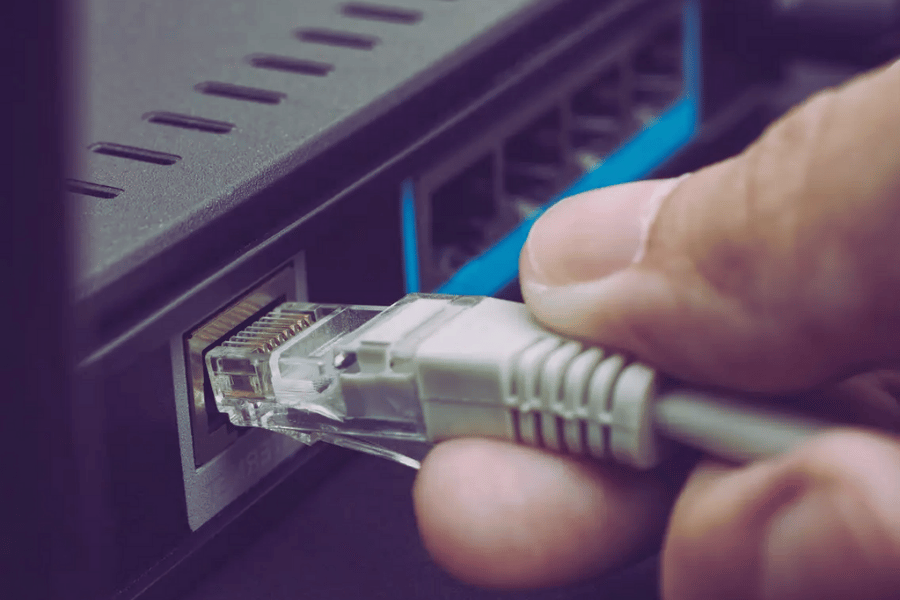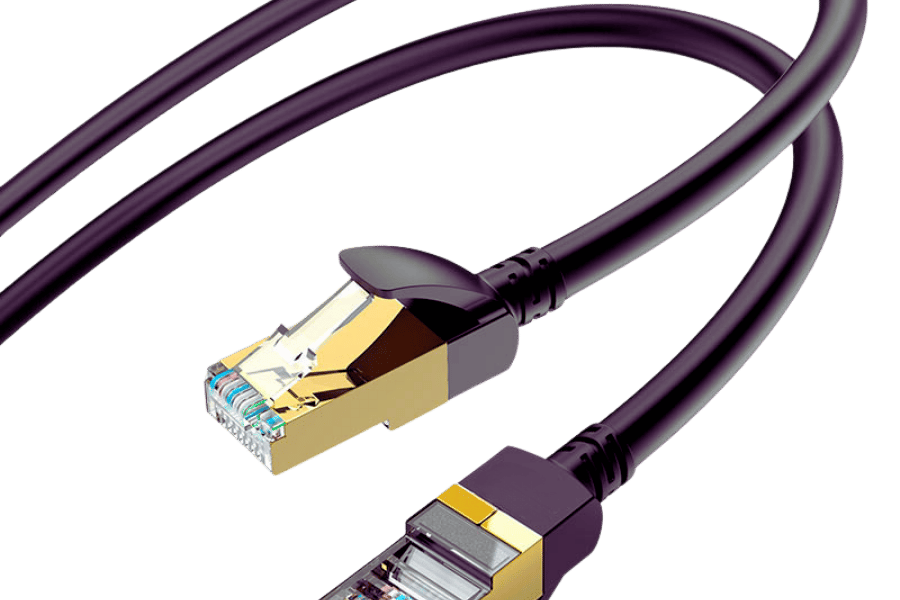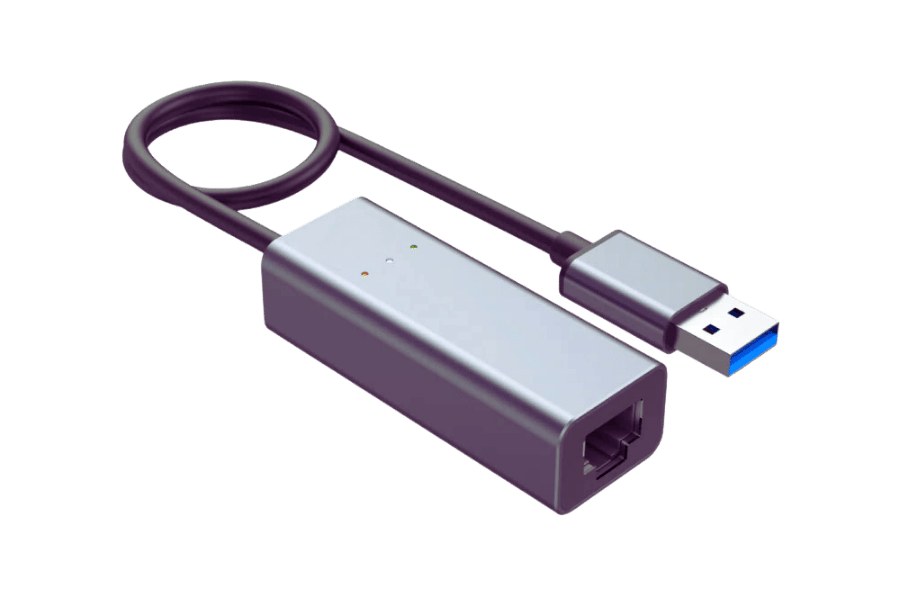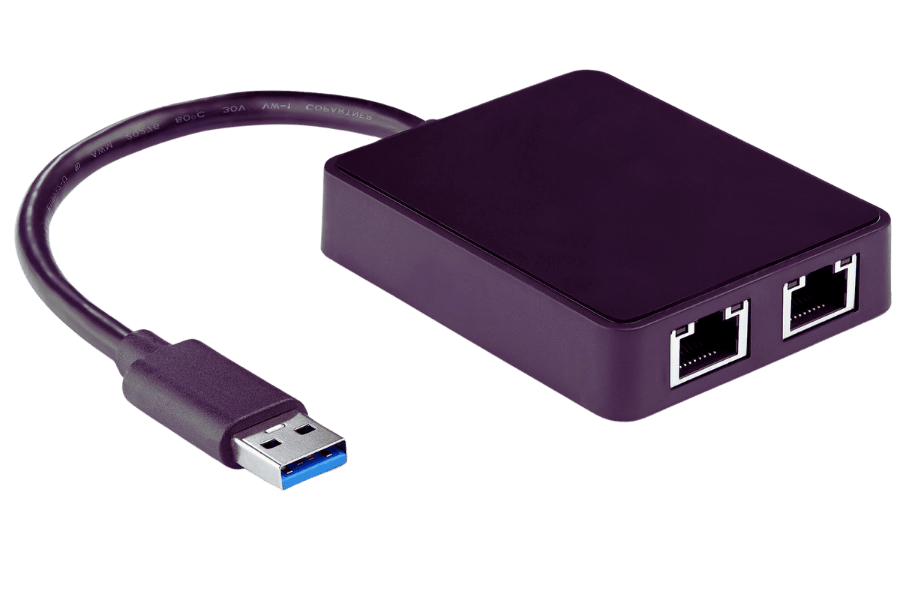With technological improvements, gigabit Ethernet has become a significant milestone in developing network technologies as it supports faster and more efficient data transmission in local area networks. This paper intends to assess the importance of Gigabit Ethernet today, the processes involved in its development, its technical aspects, and its effect on businesses and consumers. The leap in speeds from legacy networks toward a gigabit performance produces an entirely new paradigm in which information can be stored- distributed, and consumed. Starting from the intricate principles of how and why it is advisable to deploy Gigabit Ethernet, this argument is balanced by treating such concerns as its implementation and the prospects of developing network solutions.
Table of Contents
ToggleWhat is Gigabit Ethernet?

Gigabit Ethernet is a version of Ethernet technology that allows a data transfer of 1000 megabits per second (1 Gbps). This uses the IEEE 802.3ab standard and Category 5e or Cat 6 or Cat 6 cables to support wired broadband. The next step in the evolution from the existing technology where backbone links could attain up to a hundred megabits of data transfer is Gigabit Ethernet, which increases the amount and speed of the bandwidth that a user requires. This communication platform is mainly used for local area networks lfps in businesses and at home for faster file transfers, better performance on computer networks, and more complex web applications.
How does Gigabit Ethernet improve network performance?
Gigabit Ethernet improves network performance by increasing its data transfer rate to a maximum of 1 Gbps, lowering latency and better supporting data-hungry applications. Such an increase in speed reduces network traffic jams during rush hours, enabling easier movement of huge files and high-quality videos. The increase in the capacity of low-cost Gigabit Ethernet also leads to a rise in the number of connections that can be made simultaneously, which is helpful in many devices and user environments. On top of that, it integrates well with the existing network equipment board, ensuring a cost-effective upgrading option without requiring significant redesign or extra cable installations.
What makes Gigabit Ethernet faster than Fast Ethernet?
Gigabit Ethernet, on the other hand, offers better performance than Fast Ethernet mainly because it has a broader bandwidth and a higher data transfer rate that can go as high as a thousand megabits per second when compared to the 100 megabytes per second of Fast Ethernet. This is done using the IEEE 802.3ab standard that manages the encoding of the signals, which improves the efficiency, making incorrect information due to the signals low and the handling of the correct signals highly effective. Moreover, to get better attenuation and interference drop, the transmission is also made on better class cabling like Category 5e and above, increasing its data capacity but using better cabling. These technological improvements have combined to make the device perform better than Fast Ethernet.
What are the critical components of a Gigabit Ethernet network?
The major hardware components of a Gigabit Ethernet network include network interface cards (NICs), switches, routers, and related cabling. The problem is that to work with Gigabit speeds, Network Interface cards must support Gigabit speeds on all devices. A switch is a device that performs the feature of a center point routing traffic from one device to another due to the high bandwidth demands supported by the Gigabit Ethernet technology. Routers attach the LAN to other devices or connect it to the internet to enhance communication and data exchange. Finally, appropriate cabling, Category 5e, Category 6, or fiber optics, must support the required fast data transmission speed of the network with minimal loss and maximal efficiency.
How Does Gigabit Ethernet Compare to GBE?

What is the difference between Gigabit Ethernet and GBE?
Gigabit Ethernet, or GBE as it is sometimes informally referred to, is a more specific technology. Since both refer to a similar IEEE standard ensuring networks transfer data up to one gigabit per second, they are freely interchangeable. Gigabit Ethernet is also informally referred to by the abbreviation GBE. There is no difference from a technical perspective in either of the vocabulary. Instead, differences in the performance of the networks, including efficiency, can be attributed to the differences in the physical implementation of a particular type of network, for instance, the kinds of cables or hardware used. It is also necessary to avoid the problems of insufficient performance of some aspects of the Ethernet structure by ensuring that the appropriate class of equipment G, which mainly involves NICs, switches, and routers, is used.
Why choose GBE for your network?
GBE allows transmission of 1 gigabit per second, which explains why it is ideal for use in local area networks where high-speed data transfers are essential. With this increased speed comes its merit of bettering the general functioning as it enables heavy applications like video calls, movement of large files, and real-time updates. Additionally, using GBE means the company will also take advantage of better network performance and less response time, which is essential for companies that need speedy communication. Also, GBE will likely make your structure last longer because the collection rate will not mean repeated renovations. GBE supports backward compatibility, making it easy to plug and play in the existing setups without additional great costs.
The Role of Fiber Optic in Gigabit Ethernet

How do fiber optic cables enhance Ethernet speeds?
Long-distance wiring can utilize fiber optic cables for European telecommunications as signals do not degrade over a long distance. While working on this project, I discovered some of the best materials, and it turns out that fiber optics are superior to metal wires. Due to these merits, Gigabit Ethernet networks have employed high-speed data transmission technology more reliably and quickly. Moreover, the installation and maintenance processes are much simpler due to fiber optics’ small weight and high strength, thereby confirming their place in the new age of quick networks.
What are the advantages of using fiber optic in Ethernet?
Fiber optic cables in Ethernet networks hold several benefits compared to the older cables. To begin with, since the fiber capacity is enough, it suits the increasing needs of modern applications. They provide improved speed and reliability, essential for real-time performance-dependent applications. Secondly, fiber optic systems made the transmission more secure because light transmission is more complex to tap than an electrical signal in a copper cable. Last but not least, fiber optic cables are not affected by environmental factors like weather or electromagnetic waves, thus bringing about efficient and reliable data transmission. This means that fiber optics are the technological future that these businesses need to support proper networking at Gigabit Ethernet speeds.
Is fiber optic necessary for true Gigabit Ethernet?
Even though I reached out for the help of the best online resources, local area networks are always recommended to incorporate fiber optic design. However, fiber optic is not necessary to attain perfect Gigabit speeds. Copper cables could also support Gigabit Ethernet, but the performance is not as good as fiber optics over long distances. In the case of Gigabit Ethernet, fiber optics increase capacity and noise immunity and reduce signal delays, resulting in more stable connections. Hence, while copper is acceptable over short cables connecting devices for simpler uses, fiber optic could be considered the best media when establishing Gigabit Ethernet, especially when speed, stability, and efficiency are desired the most.
How Do Ethernet Controllers Affect Network Performance?

What is the function of an Ethernet controller?
In computer systems, Ethernet controllers, also referred to as an adapter board or network interface controller (NIC), enable communication with a network. This hardware controls link and physical layer protocols facilitating data over Ethernet. The Ethernet controllers are responsible for the interaction of the device and the network by transforming outgoing data signals into structured packets ready for emission and changing incoming packets back into meaningful electrical signals. They usually incorporate some elementary functions such as error correction codes and advanced options like Wake on Lan, making operating remote equipment possible. Ethernet controllers are essential elements in networking because they ensure the correct and efficient function of the network and, thereby, enhance the general network characteristics.
How do controllers influence Ethernet speeds?
The management of data and its transfer in the network significantly affects Ethernet speeds and Ethernet controllers’ efficacy. They are in charge of data movement between a device and the network, which affects its maximum throughput and response times. For example, the features of the controller, such as its processing capabilities or buffer size, as well as its compatibility with things like jumbo frames or offloading, will positively or negatively affect the Ethernet transmission rates. New generation Ethernet controllers typically have hardware acceleration to minimize CPU operations for better speed. Also, the type of controller interface (e.g., PCIe) has a bearing on obtained maximum speeds by determining the rate at which data transfer between the controller and the host system occurs. A well-optimized Ethernet controller enhances speed, power, and reliability while working with Ethernet networks.
How Ethernet Works: From Cables to Switches

How does an Ethernet switch manage data transfer?
Ethernet topology uses a switch to receive data packets from the incoming link and forward them to any node within the local area network. This task includes building a MAC table by knowing the headers of received packets, and it does not require that the switch send information to all the devices every time the information is to be sent. Switches are installed on the OSI Model’s second layer, a data link layer in which data is processed based on the MAC Addresses available in the ethernet frames and sent to particular ports. More sophisticated devices can also be classified as specifically Layer 3 protocol devices within the TCP/IP, living up to standards by performing routing and, thus, ‘operating’ using IP addressing. Using cut-through or store-and-forward technologies, Ethernet switches take control of the time of communicating circulation of the data stream across the channels to minimize the time wasted in transit.
What is the role of cables in a Gigabit Ethernet network?
In a Gigabit Ethernet architecture, transport medium remains critical in enhancing inter-chip communication efficiency. Category 5e (Cat5e) or 6 (Cat6) cables remain commercially available and help achieve a 1 Gbps transfer rate typical of Gigabit Ethernet. Such cables consist of twisted pair wiring to address electromagnetic interference, leading to the stability of the connection. Making the right choice of Ethernet cables and installing them appropriately is crucial in network performance since poor cabling leads to loss of signal, attenuation of data transfer rates, and increasing data error rates. Last but not least, options such as excessive bending of the cables or not following defined paths also contribute to EMI.
How do packets travel across an Ethernet network?
At the source of packet transmission in an Ethernet network, data is framed into packets and transmitted at the source device. These packets are addressed with the source and destination addresses, making it easy for the Ethernet switch to direct where each packet will be headed. When frames are already present in the network, the switches transfer the packets to the particular port using the stored MAC addresses in the MAC address table, directing the packet to the destination device in the Ethernet data protocol. The packets can be transported by unicast on their way to the offered service or by all the devices using broadcast packets. There are cases when regular data transmission is interrupted, and alternative strategies are employed; for example, the spanning tree protocol (STP) is used to prevent data loops from forming, thus lessening redundancy in the topology and reducing inefficiency in data transfer.
Reference Sources
Frequently Asked Questions (FAQs)
Q: What is Gigabit Ethernet, and how is it different from Fast Ethernet?
A: As the name suggests, Gigabit Ethernet is an Ethernet technology with a transferring rate of 1 Gbps, significantly faster than Fast Ethernet. Although Fast Ethernet provides an operation speed of 100 megabits per second, its successor, Gigabit Ethernet, provides 1000 megabits per second, making it more relevant to present-day network systems.
Q: What are the particular reasons for the increase in usage of Gigabit Ethernet?
A: Gigabit Ethernet has several distinct benefits, such as high capacity, reduced data transmission time, enhanced performance, possible connection with more end users, and cyclical system efficiency. Simply said, it is essential in local area networks (LANs), which must transmit and manage large amounts of data or data to assist with high-rate transmissions.
Q: Which types of cabling can be applied for Gigabit Ethernet?
A: The following cables or transmission media types can be utilized for Gigabit Ethernet: Category 5e or higher unshielded twisted pair, fiber optic technology, both single mode and multi-mode, and, for the most part, enhanced Category 5 cables. The wiring category to be utilized mainly depends on the network’s topology and the distance between the nodes.
Q: In what way does the Gigabit Ethernet switch perform its functionalities?
A: The Gigabit Ethernet switch functions optimally, with a maximum data flow of about 1 gigabit per second. It uses packet switching technologies known as cut-through switches or store-and-forward techniques to relay Ethernet packets among the devices connected efficiently. The switch looks at the address of the incoming packet, and if this does not match the packet’s forwarding address with the corresponding port, it goes to the tail of the switch to ease congestion in the network.
Q: What is the IEEE 802.3 standard, and where is it situated within Gigabit Ethernet?
A: IEEE 802.3 is the working group for the Ethernet standard. Gigabit Ethernet falls under the standards IEEE 802.3z for glass fiber and short copper cables and IEEE 802.3ab for long copper cables. These standards ensure that all Gigabit Ethernet devices and implementations work and that one can switch between them.
Q: Is integrating Gigabit Ethernet into a Local Area Network possible while maintaining older Ethernet standards?
A: Yes, this is a case of gigabit Ethernet, where switching is done between fast Ethernet and standard Ethernet. This means connecting devices that transmit data at gigabit Ethernet with those that transmit below 10 – 100 Mbps on the same local area network is possible. To fully take advantage of the speedy transfers, all the devices and components of the infrastructure should be gigabit.
Q: What is the difference between a Gigabit Ethernet switch and a router?
A: Gigabit Ethernet switch and router are essential devices for a network system, maximally with a few differences. A Gigabit Ethernet switch operates at the link layer of the OSI model and is mainly concerned with the transportation of data packets among devices on the same network. A router works at the layer above the switch, connecting different networks and transferring data in packets. In addition to other functions, routers can house ports for Gigabit Ethernet to facilitate fast internet connections to networks.
Q: Can I use Gigabit ethernet in my home network?
A: Yes, using Gigabit Ethernet at home has become familiar as technology advances. It is particularly suited for homes with several users or devices that regularly download or upload bulk data and for users requiring high-bandwidth operations such as video gaming or 4 K streaming. Gigabit Ethernet has become commonplace in most routers and network adapters, allowing room for house use.
